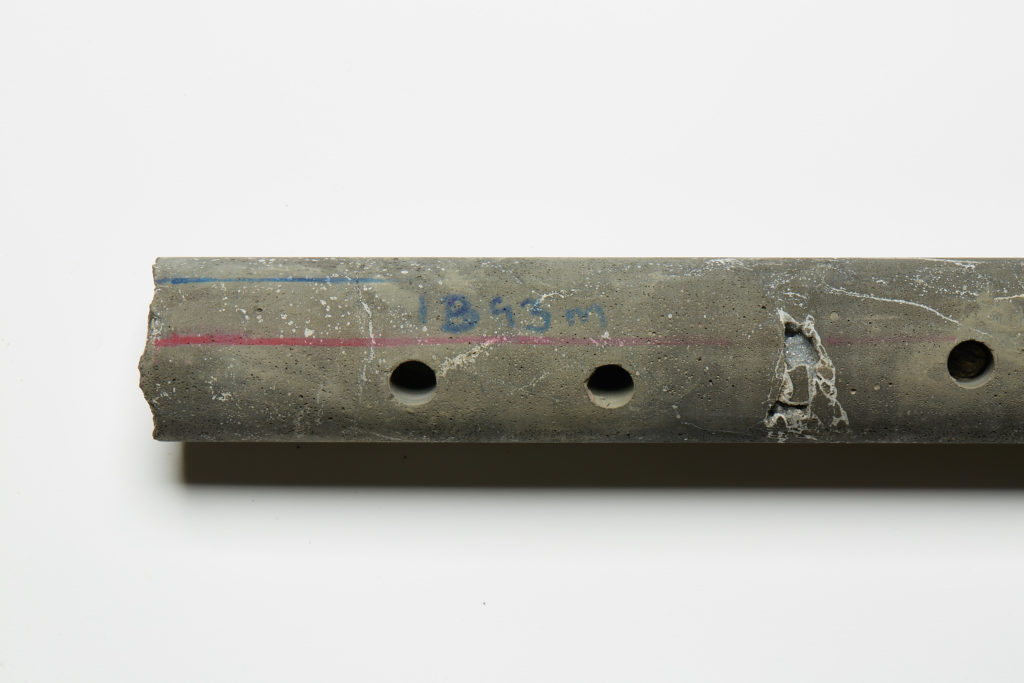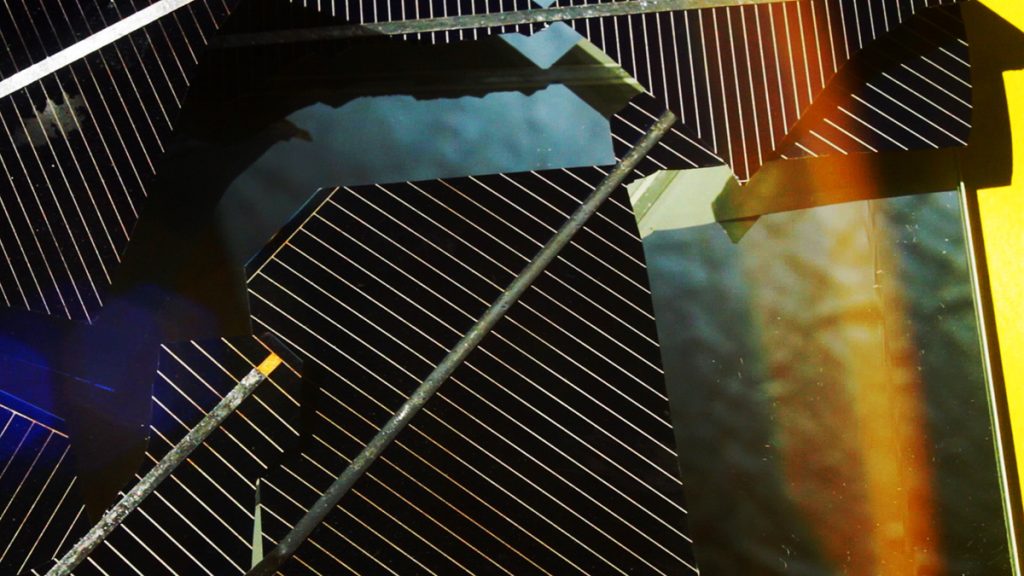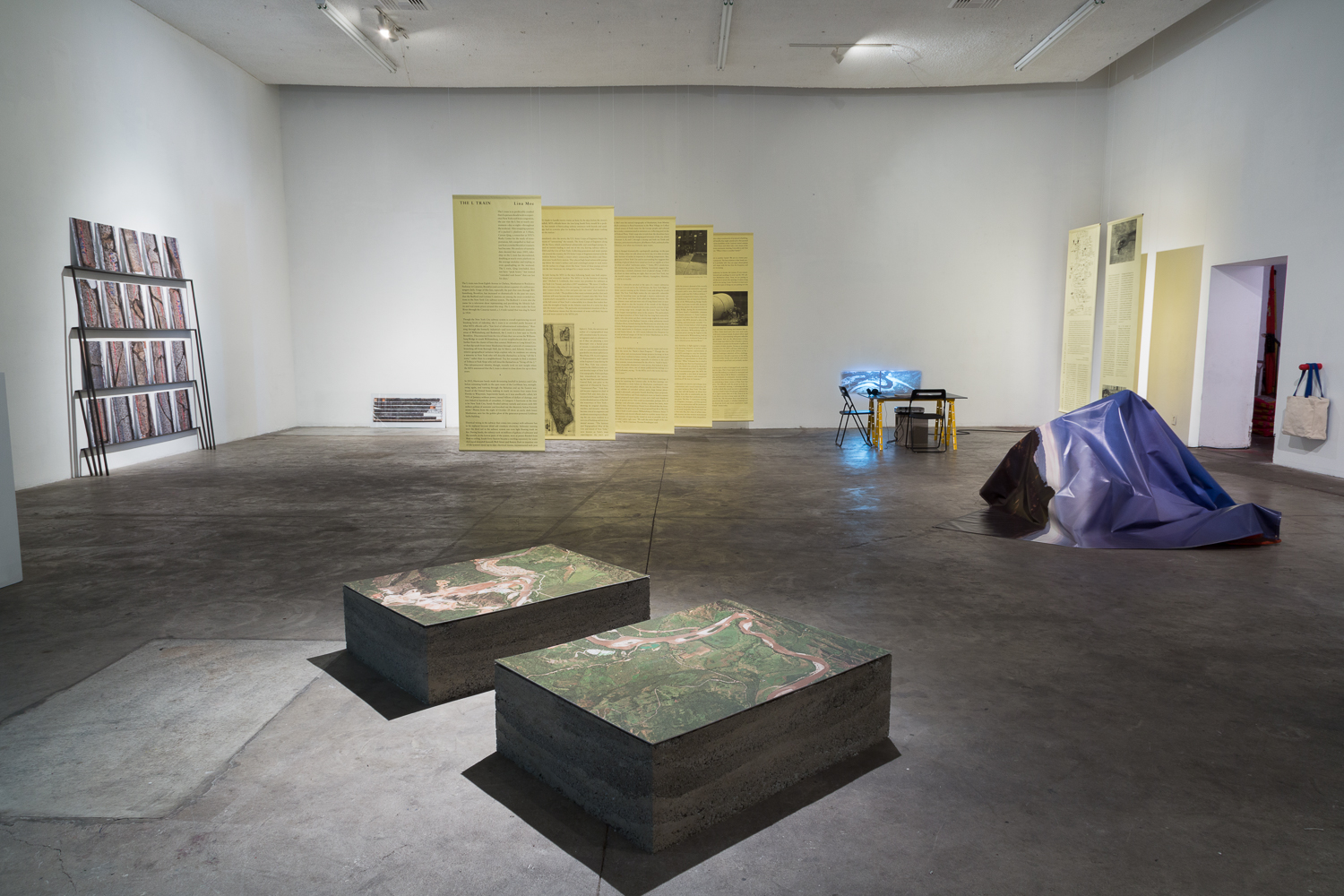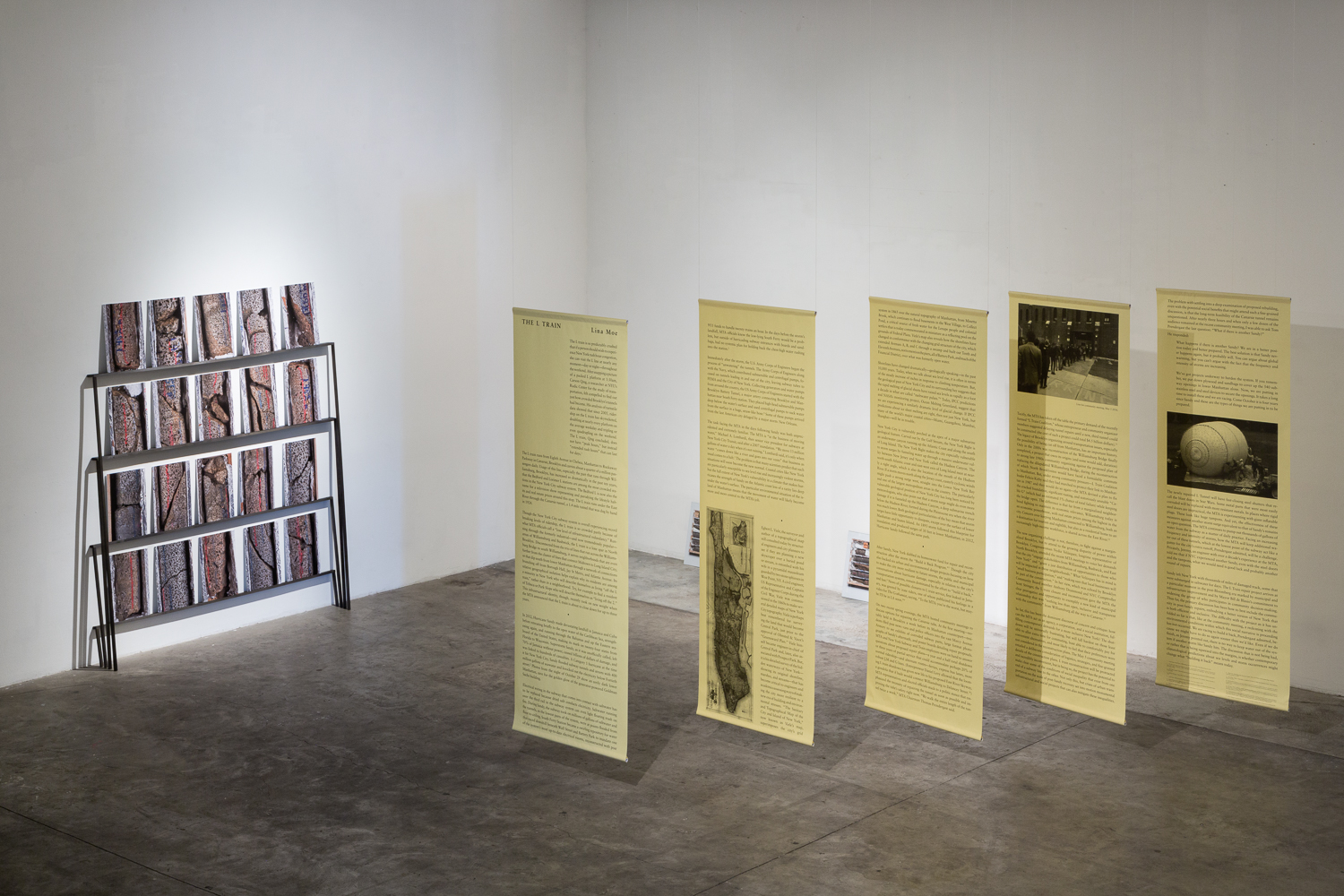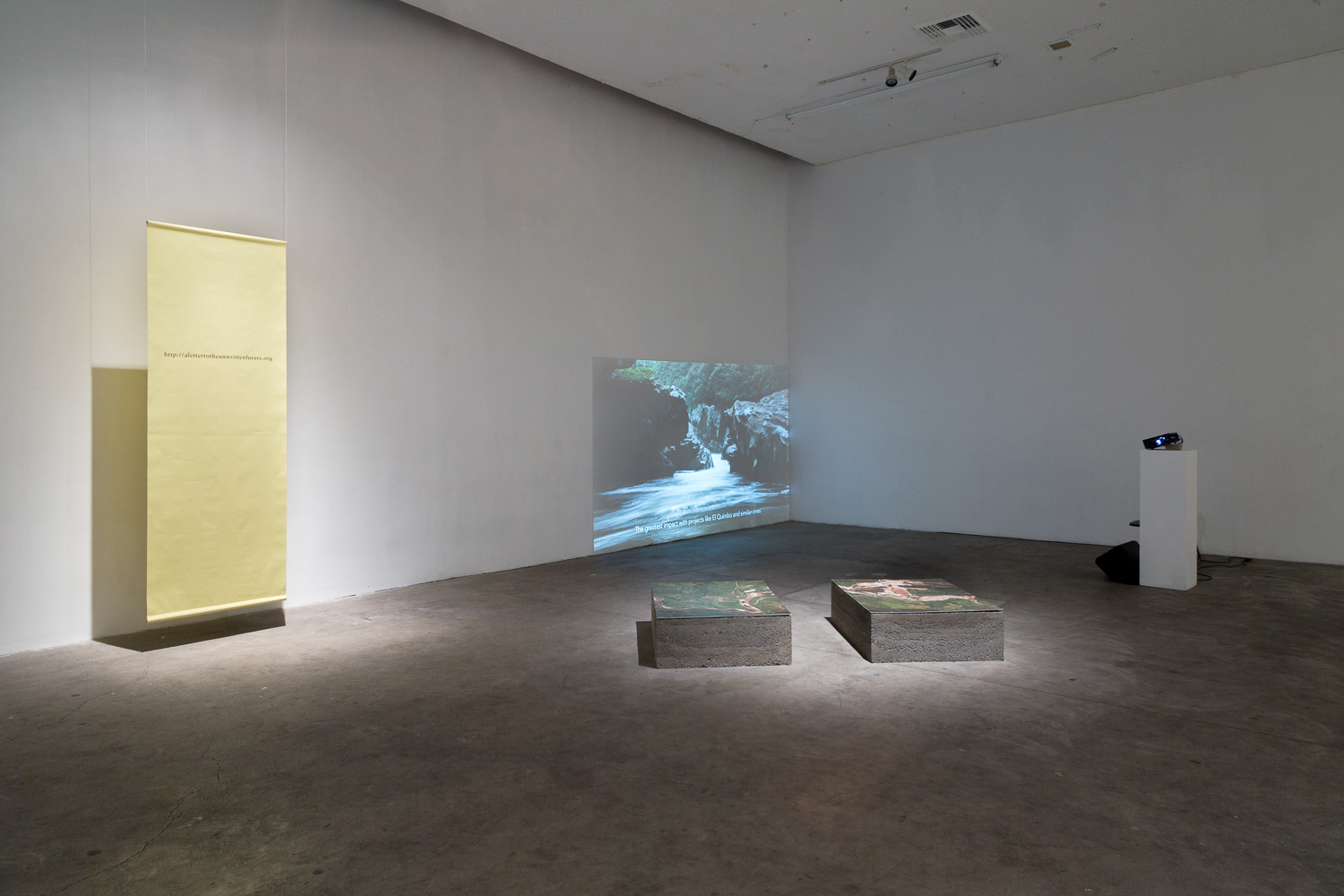
- This event has passed.
The Distance Plan – Climate and Infrastructure
June 2, 2016 - June 18, 2016
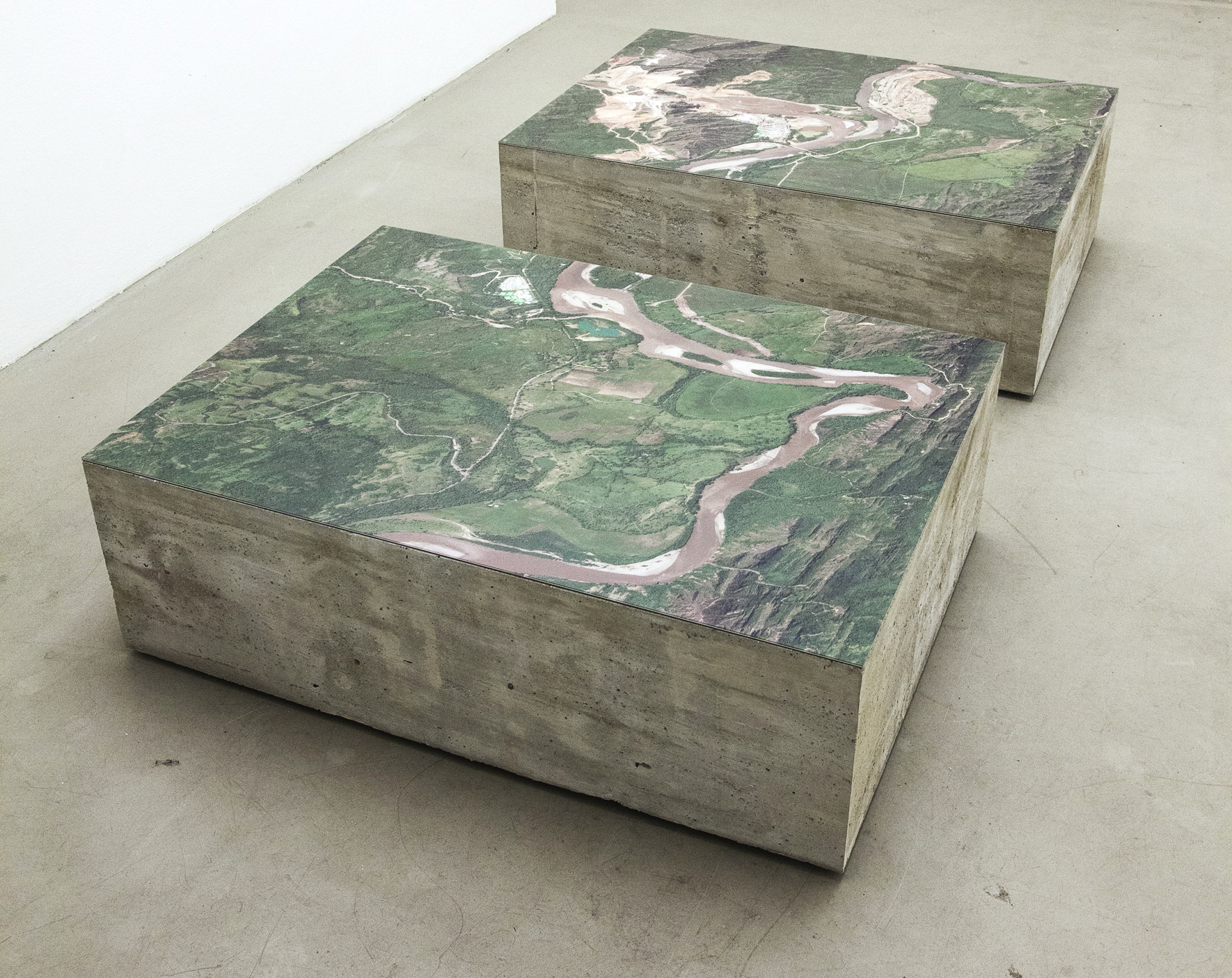
Opening Thursday June 2nd, 2016, 7-10pm.
Exhibition on view June 3rd – June 18th, Wed-Sun 12-6pm or by appointment.
Artist talk – Bjarki Bragason and Sarah Rara in conversation with Abby Cunnane & Amy Howden-Chapman Saturday June 11th, 2016, 3pm.
Bjarki Bragason, Carolina Caycedo, Fiona Connor, Ryan Jeffery & Boaz Levin, Steve Kado, Susannah Sayler & Edward Morris for The Canary Project and Sarah Rara. With a new text by Lina Moe. Organized by Abby Cunnane, Amy Howden-Chapman and Luke Fischbeck.
The Distance Plan: Climate and Infrastructure brings together work by 10 practitioners that address major infrastructural forms of the present – energy generation, digital frameworks and mass transport networks – in relationship to future alternatives. Providing a diagram of our carbon-intensive era, these works look at the ideologies driving development, and how today’s infrastructure determines both the means by which natural resources are consumed, and the ability of communities to change patterns of carbon consumption by redefining the built environment.
The politics of infrastructure is often caught in the fraught terrain between strategies for mitigating climate change and those promoting adaptation. The Distance Plan: Climate and Infrastructure thereby responds to the concept of ‘path dependency’ – the idea that the choices available to us in the present are contingent on knowledge and decisions made in the past, and that future capacity for change is substantially determined by our current planning.
Works consider the energy use of data centers (Ryan Jeffery & Boaz Levin); Colombian dams being built to power extractive industries (Carolina Caycedo); and the energy use of arts institutions (Fiona Connor). The Canary Project’s work, The American River Archive (Water Gold Soil) tells the story of a single flow of water in present-day California from origin to end-use. The project is a form of historiography, an allegory in which one strand of California’s vast waterworks becomes a broader exploration into an Age of Extraction that appears near its culmination.
Work by Steve Kado tracks the aesthetics and paraphernalia of global mobility, while Bjarki Bragason’s project considers the relationship between geo-engineering and emissions reductions. Through documentation of ‘CarbFix’ Bragason presents images of a project in which Icelandic scientists work with industry to mineralize Co2 by funneling it deep into basaltic rock hundreds of meters below the earth’s surface, accelerating a process which would otherwise take dozens of millennia. Sarah Rara’s work Broken Solar [Accumulator] is a meditation on natural resources, human-built environments, and the aesthetics of renewable energy. The work studies photo-voltaic surfaces and strategies for converting light into electricity and heat, traversing sites of production from the skeleton of a blue whale to Biosphere 2, from the riparian hills of Ukiah to Arizonan solar farms.
The soft infrastructures of institutions are also considered, as attempts to manage the present effects of climate change are confronted by municipal and national governments and local community organizations alike. In a new text by Lina Moe about the closure of New York City’s L train for post-Sandy repairs she observes how issues of inclusion, equity, and efficiency play out at all institutional levels. The line’s closure is an example of the increasing vulnerability of civic infrastructure and Moe asks if retreat, rather than rebuilding should be the goal, concluding that the latter directly reflects the present state of denial about the increasing environmental precarity of the system.
For further information visit TheDistancePlan.Org
or contact info@thedistanceplan.org
